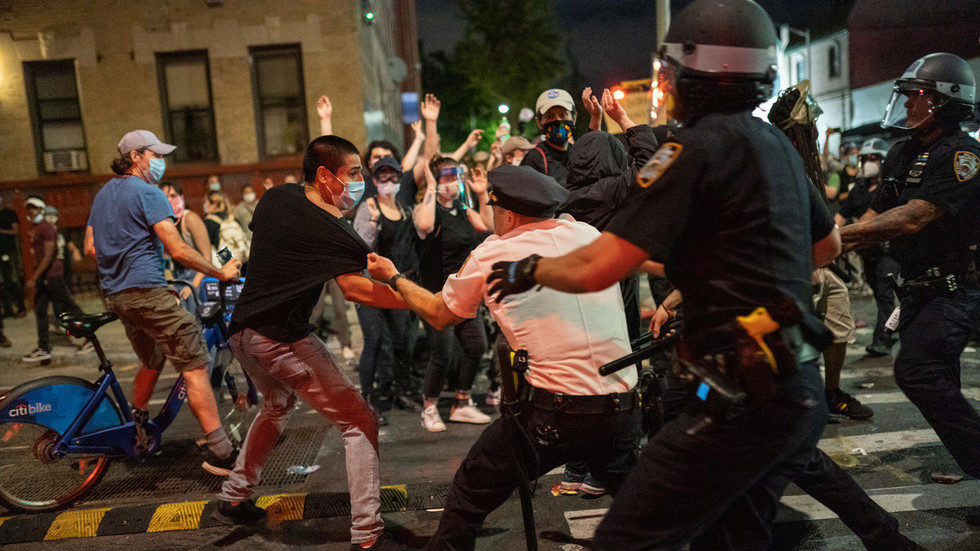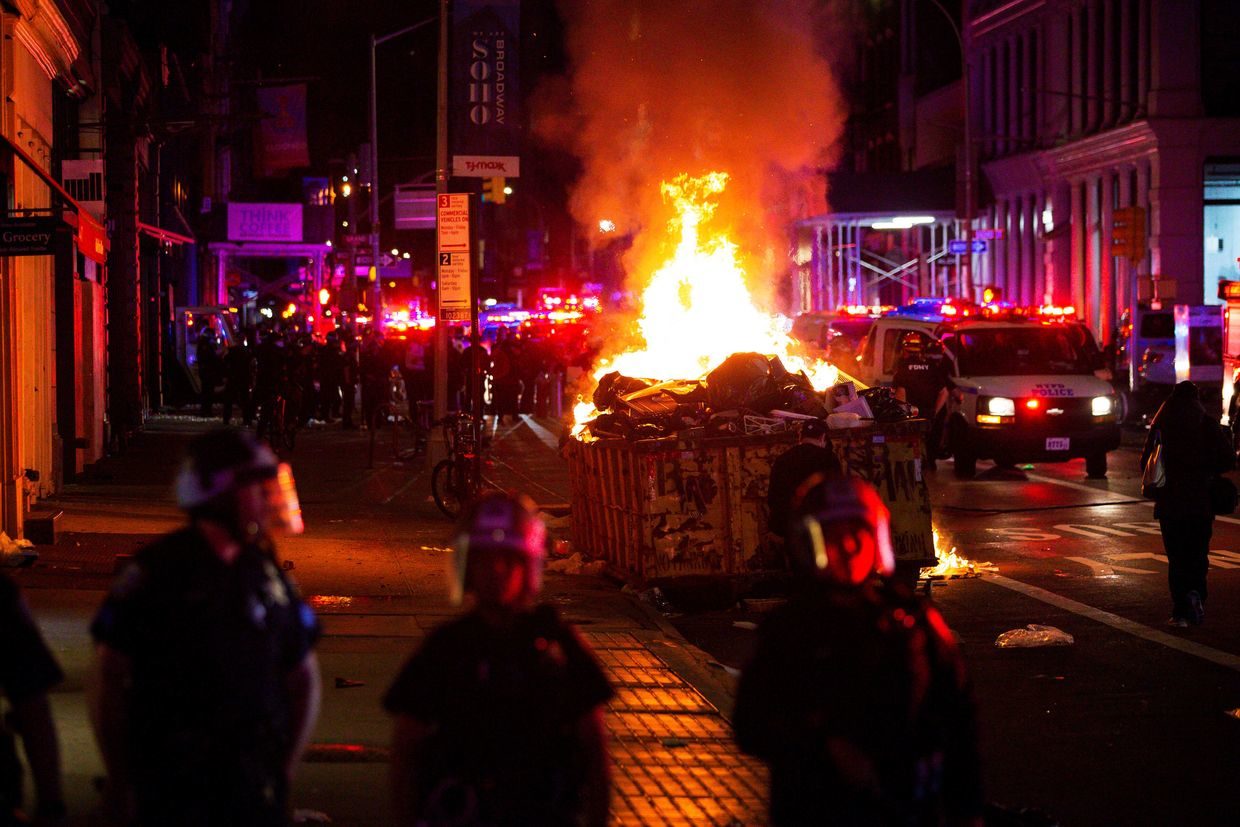
America has once again been gripped by massive protests as the Black Lives Matter movement seemingly regained momentum following the death of another African American at the hands of the US police. The man was choked to death by a police officer during detention in Minneapolis last week. An independent autopsy confirmed that the man's death was a result of asphyxiation.
A total of some 400 cities in all 50 US states - as well as in the territories of Guam and North Mariana Islands - witnessed protest actions over the weekend. And even though most of the rallies were peaceful, some American cities turned into real riot hotspots as angry crowds attacked police officers, who responded by firing tear gas and rubber bullets at protesters.
Chicago in particular turned into a battleground over the weekend, with the demonstrations beginning on Friday and eventually transforming into violent riots by Saturday. Rioters were smashing windows and vandalizing buildings as well as looting shops. More than 130 police officers were injured as a result of clashes and almost 700 looting arrests were made on Sunday alone. Illinois Governor Jay Robert Pritzker also summoned the National Guard to put the situation in downtown Chicago under control.
New York has become another epicenter of riots that saw demonstrators throwing bottles at police as well as attempting to torch police cars, including with Molotov cocktails. On several occasions police cars were also filmed ramming crowds, incidents that resulted in some injuries. Hundreds of demonstrators were arrested, including mayor Bill de Blasio's own daughter, Chiara.

Fatal incidents were recorded during violent clashes in Indianapolis, Indiana, and Davenport, Iowa. The National Guard has been called in to tackle the unrest in multiple states.
President Donald Trump deployed "heavily armed" US troops to Washington DC to "stop the rioting, looting, vandalism, assaults and wanton destruction of property" after the White House was put on lockdown last Friday as the demonstrators reached the gates.
The protesters even clashed with the secret service, although that incident resulted only in minor injuries. Trump then threatened to dispatch active service troops to stop the unrest. A similar move was last taken by George H.W. Bush back in 1992 to stop the infamous Los Angeles riots. To do so, Bush used the Insurrection Act passed in 1807, over 200 years ago. Now, Trump might have to use it as well if he intends to follow through on his threat.



Comment: More updates from around the country:
State of Minnesota files racial discrimination charges against police department over George Floyd death 'We're not leaving!' Hundreds take to streets in DC in defiance of curfew order as protests rage on WATCH looters use FORKLIFT to break into California store in broad daylight Portland mayor lifts curfew for good behavior but '2nd-chance' protest swiftly descends into violence